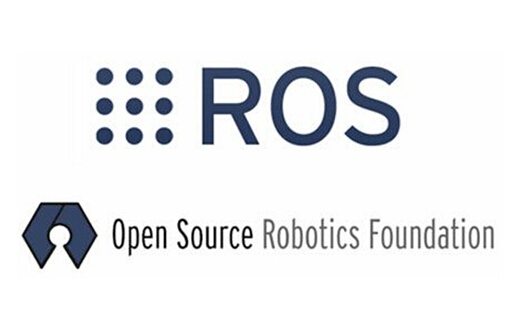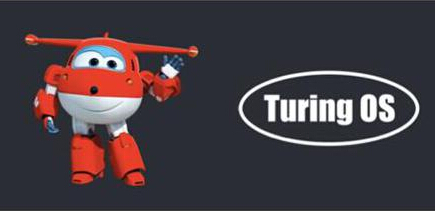In the field of robotics, because the robot application is still in the stage of research and development, and the robot products are various, there is no operating system in the robot field that can match Windows or Android.
At present, the more mainstream robot operating systems currently include Android and ROS. The former is an open source software platform developed by Google. Currently, it is superior to Apple's closed iOS system in the global smart phone field with a market share of over 80%; The full name is Robot OperaTIng System (robot operating system); in addition, there is a domestic company Turing robot dedicated to the robot's Turing OS operating system.
About ROS past and present

The full name of ROS is Robot OperaTIng System, a set of open source operating systems designed specifically for robots, and an operating system built on top of Linux.
The predecessor of ROS is the Switchyard project established by Stanford Artificial Intelligence Lab to support STAIR (Stanford University Artificial Intelligence Robot Project), which can provide some standard operating system services, such as hardware abstraction, underlying device control, and common functions. , interprocess messages and packet management. In 2012, the ROS team became independent from Willow Garage and formed a non-profit organization (OSRF).
ROS is based on a graph-like architecture whereby processes at different nodes can accept, publish, and aggregate information (such as sensing, control, state, planning, etc.). Currently ROS mainly supports the Ubuntu operating system. In fact, ROS is as open source as Android, and its functionality is similar. It provides hardware abstraction, underlying device control, common function implementation, interprocess messages, and packet management. It is unique in that it supports multiple languages ​​such as C++, Python, Octave, and LISP, and even supports multiple languages, which simplifies the developer's work. Because it is a Linux-based system, its reliability will be higher, its size can be made smaller, and it is suitable for embedded devices.
According to market research, many robot companies have adopted ROS systems to develop products for new markets, such as ClearPath, Rethink, Unbounded, Neurola, Blue River, and most typically Willow Garage's PR2 robot.
About Turing OS now and in the future

At present, in the industry-recognized three major operating systems of robots - Ubuntu, Android and ROS, for the moment, most companies using the Android operating system. The Turing robot hopes to become an Android system in the robotics world.
Founder Yu Zhichen believes that the entire robot industry is in the early stage, and robots have shortcomings in the underlying technology and operating systems. Basic robot companies use Android solutions, but Android is not a system for robots. Therefore, Turing robots spent a lot of time and technology in the past year and invested a lot of research and development energy to make a robot-oriented operating system.
One is the Turing OS operating system, which is mainly for home service robots. In November 2015, Turing OS was launched, which is basically the first intelligent robot operating system in China. On July 28 this year, the new Turing OS1.5 version was launched at the Turing Robot Innovation Conference.
The operating system Turing OS developed by Turing Robot has been upgraded from the original 1.0 version to the 1.5 version. The new version has been enhanced in terms of visual capabilities, motion control and hardware modules. In terms of vision, TuringOS1.5 will add 11 visual capabilities, including face recognition, face detection, face tracking and many other visual technologies. In motion control, Turing OS1.5 enhances the pair of 17-20 degrees of freedom. Gait robot support; hardware module, TuringOS1.5 completes the motherboard and microphone array, Lidar is in the internal test.
Robots equipped with the Turing OS 1.5 system will be in volume production. For example, Doraemon is in Taobao crowdfunding in April this year. In just one month, the crowdfunding amount exceeded 10 million. The Ledi robot that cooperates with Aofei will be released in Jingdong crowdfunding next month. It is expected to be released in the second half of the year. The cargo volume will reach 100,000 or more. In addition to Doraemon and Ledi, there are 7-8 robotic products equipped with Turing OS, which are under development and will gradually face the market in the third and fourth quarters of this year.
The difference between Turing OS and Windows and Android, Yu Zhichen believes that there are three aspects: First, the scene. Windows is mainly used in desktop computers, PCs, and Android is mainly used in smart phones. Turing OS is mainly used on intelligent robots. This is about using scenarios and hardware carriers; second, interactive mode. More PCs interact with people through keyboards and mice. Android is more interactive with smartphones through multi-touch. Robots are very different. Computers and mobile phones have at least one screen, but in many cases robots have no screen. The main interaction of robots is to interact with people in a multi-modal way. Turing also proposed the last conference. Robot multimodal interaction concept; third, application scenario. As a terminal carrier, the application based on this is completely different through different hardware, system, and interaction. Both PC and mobile phone have their own application system. (Comprehensive finishing)
Our company offers rubber, and specialty seal and o-ring for molding electronic and electrical Connectors, both circular and rectangular types. We have in house capabilities and quick turn around.
Cable Grommets with various Grommet Shapes, Rib Styles, Slot Shapes, Inner Flanges, and Colors - To have access to our 3D Cable Grommet Design Tool
Silicone Rubber Products,Cable Silicone O-Ring,Rubber Seal,Custom Silicone Seal,Waterproofing O-Ring,Tpe Grommet
ETOP WIREHARNESS LIMITED , http://www.oemwireharness.com
